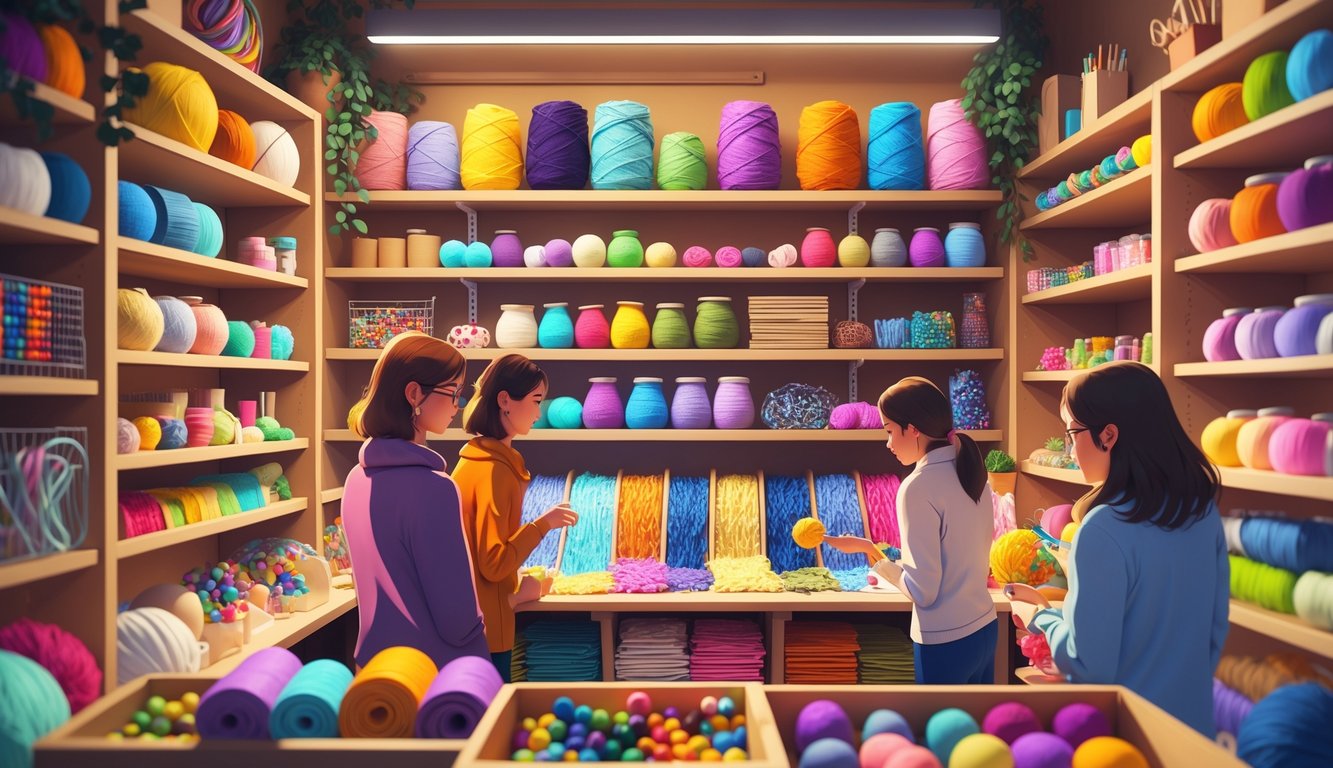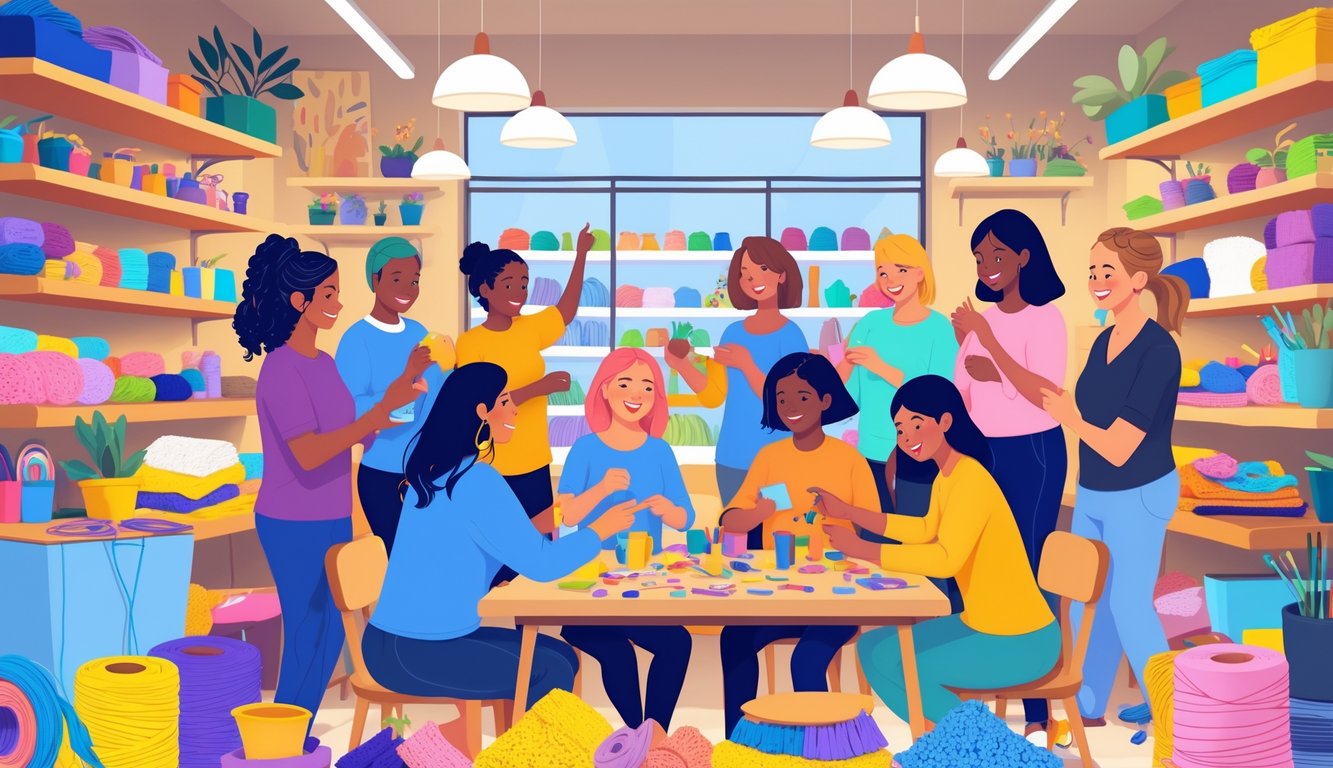
The Rise of Crafting Communities and DIY Spirit

Nobody likes to admit how much money just evaporates on single-use supplies—that’s where swaps and Pinterest black holes come in. They save my sanity and stop my fabric stash from taking over the house. Retailers must notice how handmade markets and online tutorials are blowing up hobby budgets and turning thread into mini empires.
Local and Online Crafting Groups
I’m that person bouncing between the library’s craft night (you’d be shocked what gets left—half-used yarn, random buttons) and a Discord where someone’s arguing about why Japanese washi tape never runs out. Actual numbers: Crafts Council said UK adults buying craft stuff jumped 73% in 2019—way before swaps got trendy. Local crafters whisper about ‘swap bins’ behind the community center. If you’re not grossed out by half-used paint, it’s basically an underground supply exchange. Even introverts show up if there’s free glue sticks and clay.
Community Boards and Group Inspiration
Handwritten notes on the post office board—“Yarn leftover, call Janet”—work better than a 1,000-member Facebook group when you’re hunting for the right bead at 6pm. The real gold? Ideas. I almost started a fight over who invented the upcycled wine-cork trivet, only to find someone posted their (ugly, honestly) pattern with step-by-step photos on the community board. I doubt retailers have any clue how fast tips spread—if one person figures out how to fake glitter with soap shavings and food dye, suddenly every church basement is testing it. It spirals. No one tracks it. It’s way faster than any loyalty program.
Influence of Online Crafting Communities
If I hear one more influencer call glue dots “game-changing,” I’m out. But there’s no denying Reddit and Discord have a grip—people swap glue recipes, packaging hacks, copyright loopholes for vintage patterns, all in real time. Swaps by location, Google Sheets for sign-ups—it’s like a secret market, but it’s just bookmarks and DMs. Privacy settings never work. Last year I joined a “local only” Facebook swap and wound up mailing woodburned spoons across three states. Meanwhile, retailers just hope people burn out before anyone notices half the foot traffic in the “new arrivals” aisle is just price-checkers prepping for the next swap.
How Material Swaps Work: Process and Platforms
Nobody warns you how wild it gets when someone brings fabric dye instead of buttons, and suddenly five new projects explode out of the wrong box. Swapping’s chaotic, but it’s the good kind—no inventory software can beat the sight of twenty crafters raiding each other’s stashes and saving a fortune.
How to Organize a Craft Supply Swap
So, my phone buzzes at 11pm: “Is your glue gun hot or cool? Are glitter jars safe to swap?” No one agrees. By morning, there’s a card table at the rec center, sign-up sheets half done, and a side group debating if sequins count as “essential.” Etsy polled in 2023 that 65% of crafters shelve supplies for over six months. That’s just sad.
Best advice? Use RSVP lists (Google Sheets, RSVPify), color-code the supplies, tape a grid to the wall, and don’t expect anyone to follow the rules. Someone always brings cookies, someone sneaks in garden seeds. Only rule that actually works: take three, leave at least one. Friend of mine (shoutout to Craft Industry Alliance) says, “Label everything or someone’s leaving with mystery yarn.” She’s right.
Platforms and Tools Used for Swapping
Stumbled into r/crafts late at night again—should’ve been sleeping, but instead I’m scrolling through Discord servers where people swap literal pounds of scrap leather and, I don’t know, washi tape that looks like it came from a 1986 stationery shop. Facebook Groups? I mean, good luck—rules change every week and half the posts are just “ISO wedding stuff” spam. Swappa, Craftster, even Craigslist (if you’re brave and don’t mind wading through a sea of “wedding centerpiece” posts). Mods try, but once the thread blows up, it’s like, who’s actually reading the rules? Local meetups limp along on volunteer energy and those endless Doodle polls that never close.
Bunz and Nextdoor? Yeah, those exist. Bunz has this barter thing where you have to pretend you know what a bag of felt is worth—like, is it equal to a neon thread kit? No one knows. Reddit swaps get sketchy, so I always demand timestamped photos and double-check usernames, because apparently, if you don’t, you lose three cutting mats to some ghost account. Here’s a table I threw together, not fancy:
| Platform | Best Use | Downsides |
|---|---|---|
| Broad community | Poor moderation, spam | |
| Discord | Fast swaps | Hard to track, no archiving |
| Craftster | Niche, organized | Slower, old interface |
| Bunz | Barter for anything | App glitches, small userbase |
| Meetup.com | In-person events | Needs local critical mass |
Honestly, the only thing holding these groups together is a mod who hasn’t quit yet. The second anyone says “holiday décor only,” someone dumps a box of mystery Halloween slime on the table and calls it festive.
Creative Benefits of Swapping Materials for Crafters
I’ll stare at my pile of pastel felt scraps, convinced I’ll use them “someday,” then see someone trading a whole stash of metallic thread and think, why do craft stores even exist? Every time people swap instead of buying more, suddenly everyone’s got new colors, weird textures, and ideas that don’t come in a kit. It’s like the entire retail model just… glitches. I mean, why is it surprising that crowdsourcing supplies makes for better projects? It’s not, but people act like it is. It’s messier and more random than any “inspiration” aisle at Michaels.



